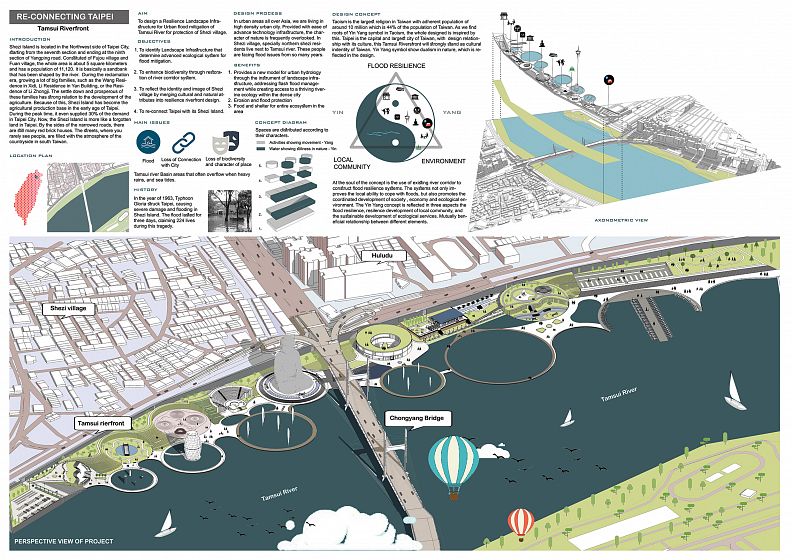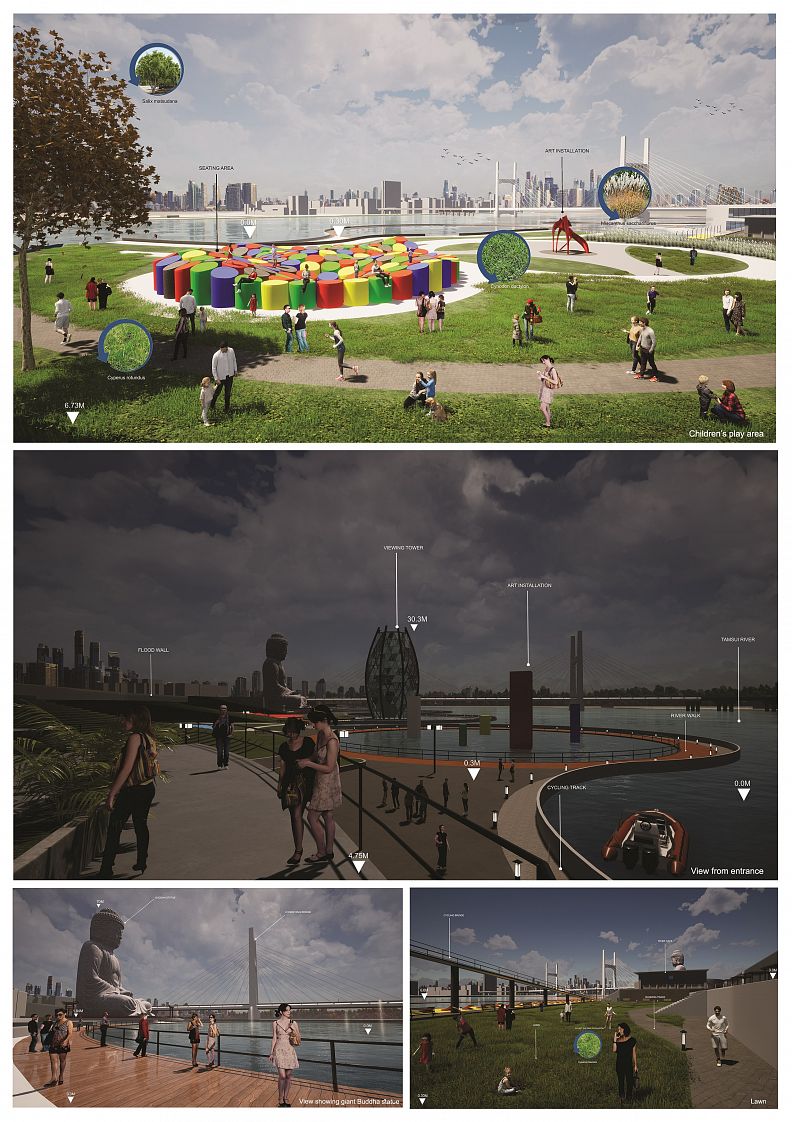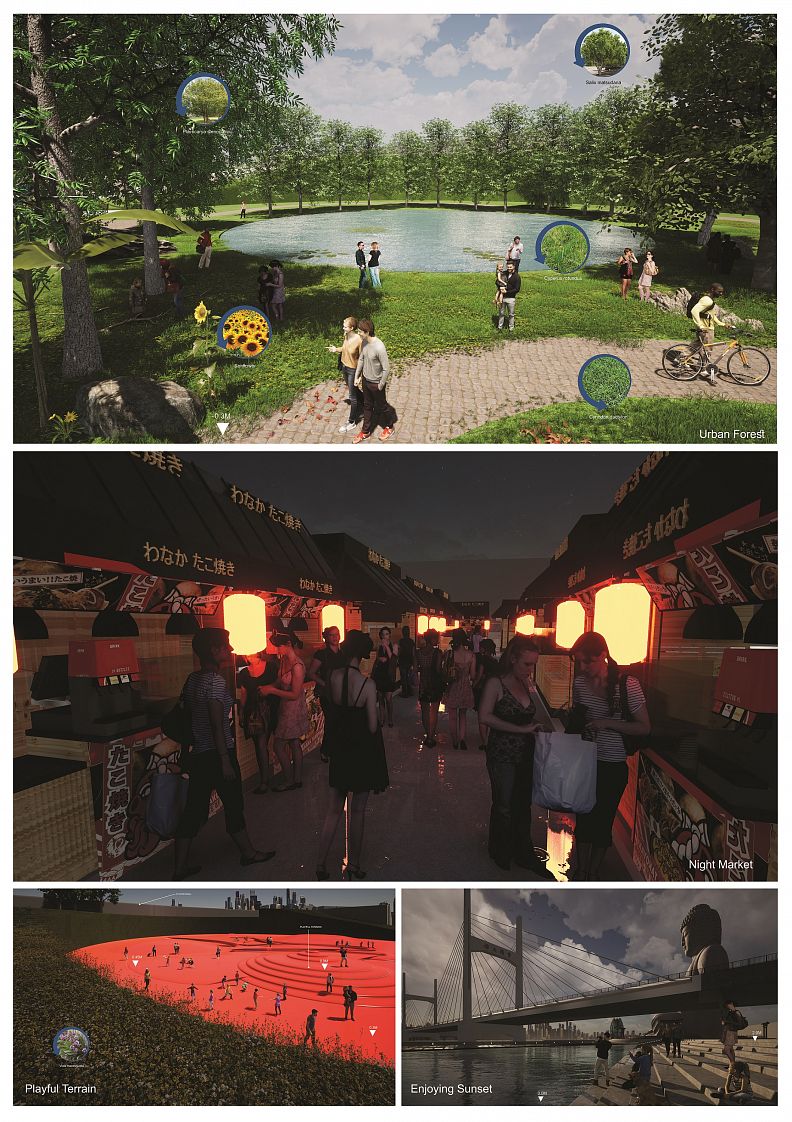Reconnecting Taipei

Project idea
1.To identify Landscape Infrastructure that determine advanced ecological system for flood mitigation.
2.To enhance biodiversity through restoration of river corridor system
3.To reflect the identity and image of Shezi village by merging cultural and natural attributes into resilience riverfront design
4.To re-connect Taipei with its Shezi Island
Project description
Shezi Island is located in the Northwest side of Taipei City, starting from the seventh section and ending at the ninth section of Yangping road. Constituted of Fujou village and Fuan village, the whole area is about 5 square kilometers and has a population of 11,120. It is basically a sandbank that has been shaped by the river. During the reclamation era, growing a lot of big families, such as the Wang Residence in Xidi, Li Residence in Yan Building, or the Residence of Li Zhongji. The settle down and prosperous of these families has strong relation to the development of the agriculture. Because of this, Shezi Island has become the agricultural production base in the early age of Taipei. During the peak time, it even supplied 30% of the demand in Taipei City. Now, the Shezi Island is more like a forgotten land in Taipei. By the sides of the narrowed roads, there are still many red brick houses. The streets, where you rarely see people, are filled with the atmosphere of the countryside in south Taiwan. Now currently Shezi island facing some problems which are flood, loss of connection with city and loss of biodiversity and character and place. The aim is to design a Resilience Landscape Infrastructure for Urban flood mitigation of Tamsui River for protection of Shezi village. In urban areas all over Asia, we are living in high density urban city. Provided with ease of advance technology infrastructure, the character of nature is frequently overlooked. In Shezi village, specially northern shezi residents live next to Tamsui river. These people are facing flood issues from so many year. As we know Taoism is the largest religion in Taiwan with adherent population of around 10 million which is 44% of the population of Taiwan. As we find roots of Yin Yang symbol in Taoism, the whole designed is inspired by this. Taipei is the capital and largest city of Taiwan, with design relationship with its culture, this Tamsui Riverfront will strongly stand as cultural identity of Taiwan. Yin Yang symbol show dualism in nature, which is reflected in the design. At the soul of the concept is the use of existing river corridor to construct flood resilience systems. The systems not only improves the local ability to cope with floods, but also promotes the coordinated development of society , economy and ecological environment. The Yin Yang concept is reflected in three aspects the flood resilience, resilience development of local community, and the sustainable development of ecological services. Benefits of this project will be, it will Provides a new model for urban hydrology through the instrument of landscape infrastructure, addressing flash flood management while creating access to a thriving riverine ecology within the dense city, Erosion and flood protection and Food and shelter for entire ecosystem in the area.
Technical information
Taoism is the largest religion in Taiwan with adherent population of around 10 million which is 44% of the population of Taiwan. As we find roots of Yin Yang symbol in Taoism, the whole designed is inspired by this. Taipei is the capital and largest city of Taiwan, with design relationship with its culture, this Tamsui Riverfront will strongly stand as cultural identity of Taiwan. Yin Yang symbol show dualism in nature, which is reflected in the design. Spaces are distributed according to their characters. At the soul of the concept is the use of existing river corridor to construct flood resilience systems. The systems not only improves the local ability to cope with floods, but also promotes the coordinated development of society , economy and ecological environment. The Yin Yang concept is reflected in respective aspects the flood resilience, resilience development of local community, and the sustainable development of ecological services. Mutually beneficial relationship between different elements.






